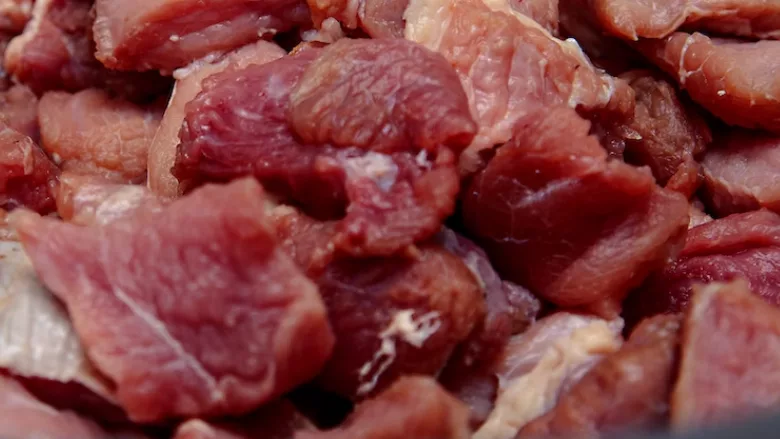FAO Reviews Food Safety of Cell-Based Foods: Terminology, Production, Regulation

Credit: Usman Yousaf (usmanyousaf) via Unsplash
The Food and Agriculture Organization of the United Nations (FAO) has turned its attention to cell-based foods (also known as “cultivated foods,” “lab-grown foods,” or “cultured foods”), with three new documents discussing food safety aspects of the novel commodity: the terminologies, the generic production process, and existing regulatory frameworks.
Terminologies
Cell-based food technologies allow for the production of animal proteins, grown in vitro from animal or microbial cells. Since cell-based foods are an emerging commodity group, the terminologies used to describe the associated technologies, production processes, and final products are inconsistent. In order to allow for clear communication, legislation, and labeling in relation to cell-based foods, it is important to analyze the existing language used to discuss the commodity and how different terminologies may be perceived.
A literature review revealed that the three most common terminologies used by consumers, industry, and consumers are “cell-based,” “cultivated,” and “cultured.” While the aforementioned terms are used in scientific publications, “in vitro,” “artificial,” and “clean” have also been used to describe the commodity and its technologies in such contexts. Media outlets use a wide range of language to discuss the foods, including, but not limited to, “cultured,” “lab-grown,” “fake,” “clean,” “cultivated,” and “cell-based.”
Limited studies have indicated that the term “cultivated” is often considered the most appealing to consumers, as are “cultured,” “cell-based,” and “clean,” to a lesser extent. Regardless, FAO encourages national authorities to establish clear and consistent terminologies for the foods in their countries. In English, FAO suggests the use of “cell-based,” “cultivated,” or “cultured,” but notes that “cultivated” and “cultured” most likely need to be followed by a commodity name (e.g., meat, chicken, fish, etc.) to mitigate miscommunication.
With the report on cell-based terminologies, FAO aims to provide a basis for global policymakers in making informed decisions on selecting consistent language for legislation and communication about the commodity.
Generic Production Process
There are a variety of techniques and technologies that enable the in vitro production of animal proteins from animal or microbial cells. To initiate a hazard analysis for cell-based food production, FAO has provided a generic, high-level illustration of the processes used, which vary and produce a wide range of final products such as meat, seafood, dairy, and other commodities.
Looking for quick answers on food safety topics?
Try Ask FSM, our new smart AI search tool.
Ask FSM →
FAO identified four major steps that are common to different cell-based production processes, each with potential food safety hazards. However, since the creation of different products may involve different sources, scaffolds or microcarriers, culture media compositions, cultivation conditions, and reactor designs, FAO recommends a case-by-case approach for the food safety assessment of cell-based products.
The four common steps in the generic production process of cell-based foods, as well as their associated food safety concerns, are as follows:
- Cell selection: sourcing, isolation, preparation, and storage. Associated potential hazards include the transmission of zoonotic infectious diseases, microbial contamination, chemical residues and byproducts, and carry-over of cryoprotectants used for cell storage.
- Production: cell proliferation and differentiation. Associated potential hazards include microbial contamination, chemical residues and byproducts, biological residues and byproducts, the risk of epigenetic drift in cell lines due to constant subculturing, and potentially allergenic scaffolds or microcarriers.
- Harvesting of cells and tissues. Associated potential hazards include microbial contamination, chemical residues and byproducts, biological residues and byproducts, physicochemical changes, and culture medium residues.
- Food processing and formulation. Associated potential hazards include microbial contamination, chemical residues and byproducts, biological residues and byproducts, processing contaminants, and physicochemical changes.
FAO notes that the majority of potential food safety hazards in cell-based food production are not new, and that such concerns can be mitigated with existing strategies such as good hygiene practices (GHPs), good manufacturing practices (GMPs), good cell-culture practices, Hazards Analysis and Critical Control Points (HACCP), and end-product food safety assessments.
National authorities are encouraged to begin conversations with stakeholders to prepare for the commercial emergence of cell-based technologies. FAO also urges low- and middle-income countries to begin assessments of their technical capacities to ensure the safety of cell-based food products.
Regulatory Frameworks
FAO conducted a literature review of relevant, existing regulatory frameworks to provide a basis for national authorities to develop their own regulatory frameworks and food safety controls for cell-based products. As of the date of the report’s publication in 2022, only one country—Singapore—has a cell-based food product on the market. However, a limited number of nations have specifically addressed cell-based foods in food safety regulations or guidelines, and, in most countries, cell-based foods can be assessed within existing novel food regulations.
Singapore has already made amendments to its novel food regulations to specifically include cultured meat. In the U.S., the U.S. Food and Drug Administration (FDA) and the U.S. Department of Agriculture (USDA) have entered a formal agreement regarding safety and labeling requirements for food made from cultured cells of livestock (including siluriformes fish) and poultry. Additionally, USDA’s Food Safety and Inspection Service (FSIS) has stated its intent to draw up regulations on the labeling of meat and poultry products derived from animal cells. FDA has also requested information on the labeling of foods containing cultured seafood cells to determine what actions, if any, the agency should take to ensure that such foods are labeled properly.
As of the date of the report’s publication, when labeling cultured meat products, no regulations exist worldwide for the designation of the modifier term “cultured,” however, there are restrictions in many countries for the use of the word “meat.” For example, Germany and France do not allow the use of terms related to conventional meat or meat products when they are cell-based, while Singapore has allowed conventional meat terms to be used in conjunction with qualifying modifiers. The topic is still being debated in the U.S. and other nations.
At its 44th session in November 2021, the Codex Alimentarius Commission also discussed the need for future work related to cell-based foods, and an analysis of submitted information on the topic is underway to determine next steps.









